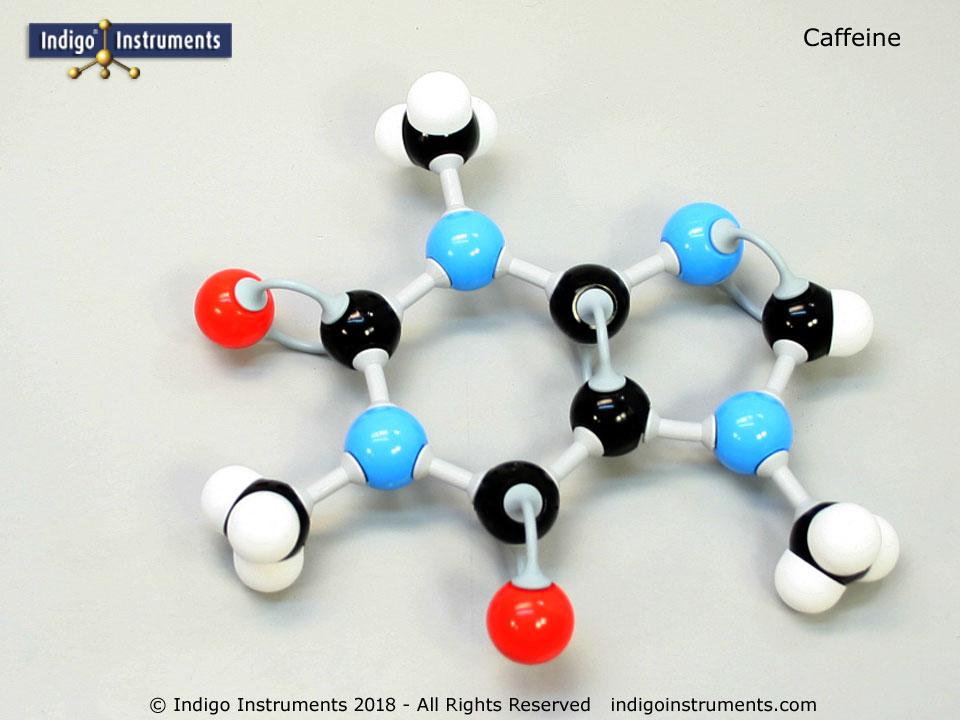Caffeine Chemical Structure Model-Assembled
SKU: 62206A
Caffeine, also known as 1,3,7-trimethylxanthine, is a purine alkaloid with a molecular structure classified as a trimethyxanthine. Most people know it as a (central nervous system) stimulant commonly found in coffee & tea. It shares important structural similarities with adenosine, a neurotransmitter, which accounts for some its psychoactive effects.
This caffeine molecular model makes a funky science promotional gift or display item to go with branded beakers in your favorite coffee shop. Buy assembled for only $29.95 or use our 3D Molecular Model Builder to pick parts & assemble yourself to save money.
Indigo Instruments has maintained a substantial inventory of genuine Molymod atoms & bonds for 30+ years. These parts are compatible with every molecular model kit we have sold. This level of quality may seem expensive but no parts support from other vendors costs even more.